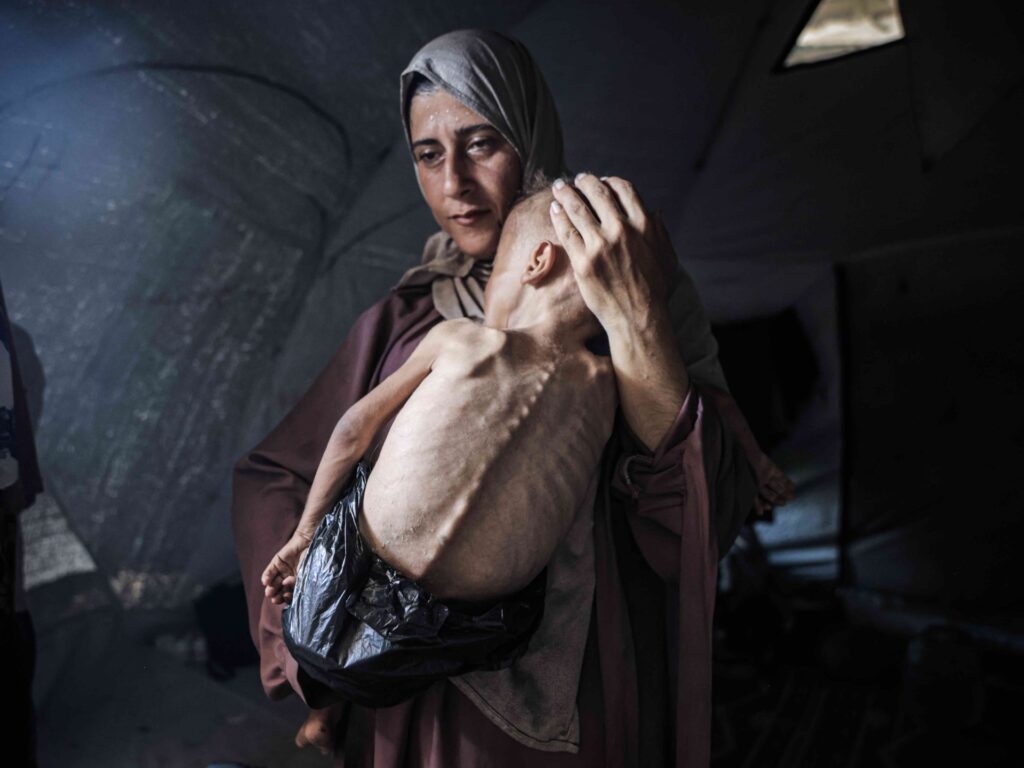The New York Times has quietly admitted what many already suspected: one of its most emotionally charged front-page images—of a skeletal Palestinian child allegedly starving due to Israeli actions—was deeply misleading.
The child, featured in a photo taken by Ahmed Jihad Ibrahim Al-arini of Turkey’s state-run Anadolu Agency, had been suffering from a muscular disorder, not starvation. That crucial detail was left out of most media narratives until watchdogs and conservative outlets began raising the alarm.
Yes, there is a humanitarian crisis in Gaza. But its root cause is not a lack of aid—Israel and Egypt continue to allow the flow of humanitarian supplies—but rather Hamas and lawless gangs hijacking aid shipments, hoarding food, and exploiting suffering civilians as pawns in their war propaganda.
The child in question, Muhammad Zakariya Ayyoub al-Matouq, is just 1.5 years old. The original caption, widely distributed, claimed he faced “life-threatening malnutrition” in the wake of Israel’s military operation and blockade. It described him as having dropped from 9 to 6 kilograms while living in a Gaza tent with “milk, food, and other basic necessities lacking.”

Yet, as conservative watchdog HonestReporting first pointed out, the very photo set used to depict Muhammad showed other children nearby—allegedly his relatives—appearing well-nourished and healthy. One was reportedly his older brother, standing alert in the background, contradicting the claim of widespread starvation in that household.
The truth came out not through The Times’ own reporting, but in a CNN interview with the child’s mother. She revealed that her son suffers from a medical condition requiring special nutrition and therapy—details that fundamentally alter the emotional and political weight of the image.
The Times posted a belated correction via its public relations team on X, stating:
“We have appended an Editors’ Note to a story about Mohammed Zakaria al-Mutawaq, a child in Gaza who was diagnosed with severe malnutrition. After publication, The Times learned that he also had pre-existing health problems.”
This wasn’t just a small footnote in a complex story—it was the emotional anchor used to support claims that Israel is deliberately starving Palestinians. Now we know that image was not only incomplete—it was profoundly misleading.
And this wasn’t an isolated incident.
Over the same weekend, countless similar photos flooded international headlines, feeding a coordinated narrative that portrays Israel as responsible for children dying of hunger. But upon closer inspection, many of those images depict children with chronic illnesses such as cystic fibrosis—conditions unrelated to food access. In one glaring example, a child shown in a viral photo was receiving treatment in Italy, with Israel’s assistance.
These facts matter. Americans—especially conservatives—understand that narratives built on half-truths and weaponized imagery have consequences. They stir public outrage, distort foreign policy debates, and manipulate global opinion, often to the benefit of violent actors like Hamas, who have no interest in peace or humanitarian relief.
When news outlets amplify a distorted picture of reality, they not only erode trust—they obscure the very solutions that could bring relief to innocent civilians. A security-first, truth-based approach—rooted in facts, not feelings—is essential.
In a time of global conflict and rising anti-Israel sentiment, accuracy is not optional. Selective storytelling may fit a political agenda, but it doesn’t serve the truth—or the people suffering on the ground.
And it’s long past time major media outlets were held accountable for choosing emotion over evidence.




















